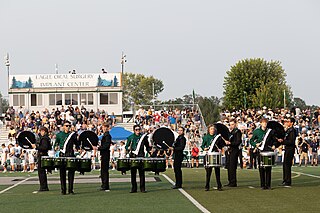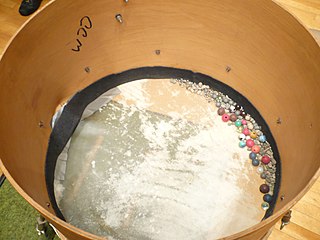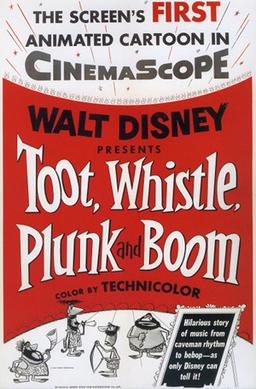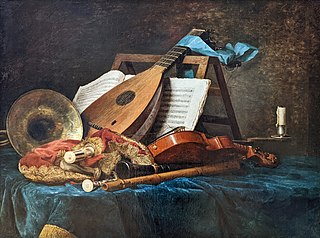Related Research Articles

A percussion instrument is a musical instrument that is sounded by being struck or scraped by a beater including attached or enclosed beaters or rattles struck, scraped or rubbed by hand or struck against another similar instrument. Excluding zoomusicological instruments and the human voice, the percussion family is believed to include the oldest musical instruments. In spite of being a very common term to designate instruments, and to relate them to their players, the percussionists, percussion is not a systematic classificatory category of instruments, as described by the scientific field of organology. It is shown below that percussion instruments may belong to the organological classes of idiophone, membranophone, aerophone and chordophone.

The snare drum is a percussion instrument that produces a sharp staccato sound when the head is struck with a drum stick, due to the use of a series of stiff wires held under tension against the lower skin. Snare drums are often used in orchestras, concert bands, marching bands, parades, drumlines, drum corps, and more. It is one of the central pieces in a drum set, a collection of percussion instruments designed to be played by a seated drummer and used in many genres of music. Because basic rhythms are very easy to learn to play on a snare drum even for children, the instrument is also suitable for the music education for young children and a rhythm band.

Olivier Eugène Prosper Charles Messiaen was a French composer, organist, and ornithologist who was one of the major composers of the 20th century. His music is rhythmically complex. Harmonically and melodically, he employed a system he called modes of limited transposition, which he abstracted from the systems of material his early compositions and improvisations generated. He wrote music for chamber ensembles and orchestra, voice, solo organ, and piano, and experimented with the use of novel electronic instruments developed in Europe during his lifetime.

The xylorimba is a pitched percussion instrument similar to an extended-range xylophone with a range identical to some 5-octave celestas or 5-octave marimbas, though typically an octave higher than the latter. Despite its name, it is not a combination of a xylophone and a marimba; its name has been a source of confusion, as many composers have called for a 'xylorimba', including Alban Berg, Pierre Boulez and Olivier Messiaen, but for parts requiring only a four-octave xylophone. However, Pierre Boulez wrote for two five-octave xylorimbas in Pli selon pli.

Tubular bells (also known as chimes) are musical instruments in the percussion family. Their sound resembles that of church bells, carillons, or a bell tower; the original tubular bells were made to duplicate the sound of church bells within an ensemble. Each bell is a metal tube, 30–38 mm (1+1⁄4–1+1⁄2 in) in diameter, tuned by altering its length. Its standard range is C4–F5, though many professional instruments reach G5. Tubular bells are often replaced by studio chimes, which are a smaller and usually less expensive instrument. Studio chimes are similar in appearance to tubular bells, but each bell has a smaller diameter than the corresponding bell on tubular bells.

Tōru Takemitsu was a Japanese composer and writer on aesthetics and music theory. Largely self-taught, Takemitsu was admired for the subtle manipulation of instrumental and orchestral timbre. He is known for combining elements of oriental and occidental philosophy and for fusing sound with silence and tradition with innovation.

A seismometer is an instrument that responds to ground noises and shaking such as caused by quakes, volcanic eruptions, and explosions. They are usually combined with a timing device and a recording device to form a seismograph. The output of such a device—formerly recorded on paper or film, now recorded and processed digitally—is a seismogram. Such data is used to locate and characterize earthquakes, and to study the internal structure of Earth.

Marching percussion instruments are percussion instruments specially designed to be played while moving. This is achieved by attaching the drum(s) to a special harness worn by the drummer, although not all marching bands use such harnesses and instead use traditional baldrics to sling their drums.

The term Chinese orchestra is most commonly used to refer to the modern Chinese orchestra that is found in China and various overseas Chinese communities. This modern Chinese orchestra first developed out of Jiangnan sizhu ensemble in the 1920s into a form that is based on the structure and principles of a Western symphony orchestra but using Chinese instruments. The orchestra is divided into four sections – wind, plucked strings, bowed strings, and percussion, and usually performs modernized traditional music called guoyue. The orchestra may be referred to as Minzu Yuetuan or Minyuetuan in mainland China, Chung Ngok Tuen in Hong Kong, Huayuetuan in Southeast Asia, or Guoyuetuan in Taiwan.
Tristan Murail is a French composer associated with the "spectral" technique of composition. Among his compositions is the large orchestral work Gondwana.

Saint François d'Assise : Scènes Franciscaines, or simply Saint François d'Assise, is an opera in three acts and eight scenes by French composer Olivier Messiaen, who was also its librettist; written from 1975 to 1979, with orchestration and copying from 1979 to 1983. It concerns Saint Francis of Assisi, the titular character, and displays Messiaen's devout Catholicism.
The Labèque sisters, Katia and Marielle, are an internationally known French piano duo.

The geophone, now often known as the ocean drum is a percussion instrument, invented by the French composer Olivier Messiaen for use in his large composition for piano and orchestra entitled Des canyons aux étoiles… and later appeared in his other works. It consists of a drum filled with thousands of small lead pellets, and is played by swirling it around slowly so that the noise of the pellets resembles the sound of dry shifting earth.

Toot, Whistle, Plunk and Boom is an American animated short film produced by Walt Disney Productions and directed by Ward Kimball and Charles A. Nichols. A sequel to the first Adventures in Music cartoon, the 3-D short Melody, Toot, Whistle, Plunk and Boom is a stylized presentation of the evolution of the four orchestra sections over the ages with: the brass ("toot"), the woodwind ("whistle"), the strings ("plunk"), and the percussion ("boom").

Des canyons aux étoiles... is a large twelve-movement orchestral work by the French composer Olivier Messiaen. American Alice Tully commissioned the piece in 1971 to celebrate the bicentenary of the United States Declaration of Independence 1976.
Trois Petites Liturgies de la Présence Divine is a cantata by Olivier Messiaen for women's voices, piano solo, onde Martenot, percussion battery, and small string orchestra, in three movements. Its libretto was written by Messiaen himself, who composed the work from 1943 to 1944.

A musical instrument is a device created or adapted to make musical sounds. In principle, any object that produces sound can be considered a musical instrument—it is through purpose that the object becomes a musical instrument. A person who plays a musical instrument is known as an instrumentalist. The history of musical instruments dates to the beginnings of human culture. Early musical instruments may have been used for rituals, such as a horn to signal success on the hunt, or a drum in a religious ceremony. Cultures eventually developed composition and performance of melodies for entertainment. Musical instruments evolved in step with changing applications and technologies.

The ondes Martenot or ondes musicales is an early electronic musical instrument. It is played with a keyboard or by moving a ring along a wire, creating "wavering" sounds similar to a theremin. A player of the ondes Martenot is called an ondist.

Et exspecto resurrectionem mortuorum is a suite for wind orchestra and percussion instruments by Olivier Messiaen, written in 1964 and first performed the following year. It is composed of five movements.

Music technology is the study or the use of any device, mechanism, machine or tool by a musician or composer to make or perform music; to compose, notate, playback or record songs or pieces; or to analyze or edit music.
References
- ↑ Klöwer, Töm (1997). The joy of drumming: drums & percussion instruments from around the world. Binkey Kok Publications. p. 45. ISBN 9789074597319.
- ↑ Ott, Pamela (2011). Music for Special Kids: Musical Activities, Songs, Instruments and Resources . Jessica Kingsley Publishers. p. 103. ISBN 9781849058582.